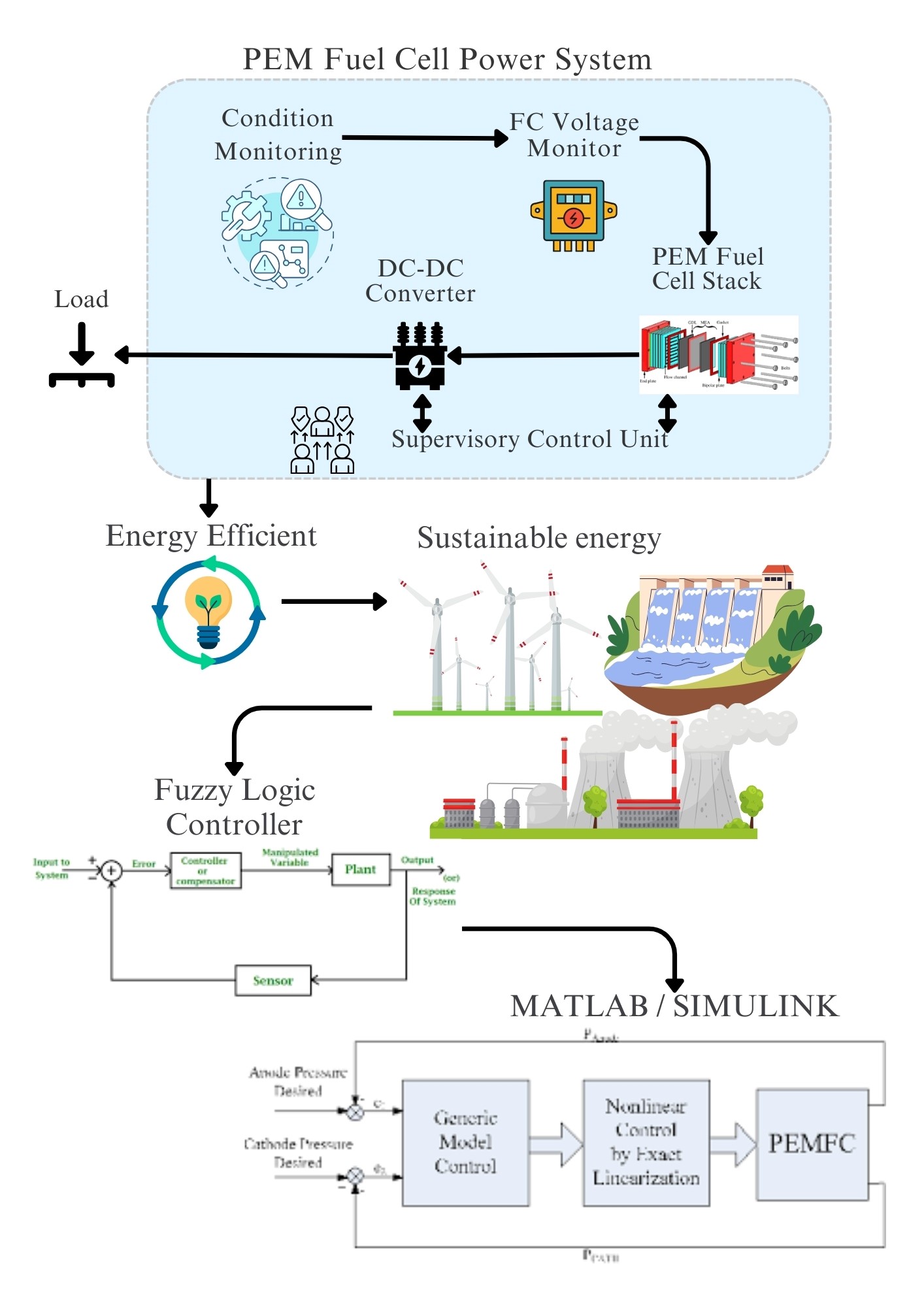
The primary source of energy in the globe has been shown to be the reliance on hydrocarbon fuel for the production of electricity. The past century has seen an explosion in the use of energy due to population and activity growth. Developing a flow field for reaction gas distributions on a PEM fuel cell to lead sustainable energy was the aim of this study. In the flow field design, the effect of flow field plate channel designs on a PEMFC's efficiency was examined. In order to optimise channel characteristics, the impacts of channel widths, lengths, and curves on a flow field plate were examined. It is anticipated that the development of these design techniques using the Fuzzy Logic Controller (FLC) will be necessary. Using an FLC model, the impact of sinuous flow channel designs on PEMFC efficiency was investigated. Experiments validated the accuracy of this model. The impact of fuel cell efficiency on flow field design was determined using the numerical data. The PEM fuel cell model in this study was created using the MATLAB SIMULINK model, and the flow rate of the input gases was regulated using a comprehensive mathematical modelling system that included the FLC controller. The simulation's findings demonstrate the viability of the fuzzy logic controller (FLC) and its three primary parts, which also regulate the input gas flow rate: fuzzyzification, fuzzy rule basis, and defuzzification. This allowed us to modify the gas flow field's structure, which enhanced water management and gas dispersion. This study will assess the relationship between pressure loss and velocity dispersion and channel width, channel geometry, and flow field features using a numerical model. The purpose of the testing is to validate the power curve and polarisation computational predictions. The results of this investigation will give us the fundamental understanding needed to build and operate fuel cells.
Total file downloads: 27